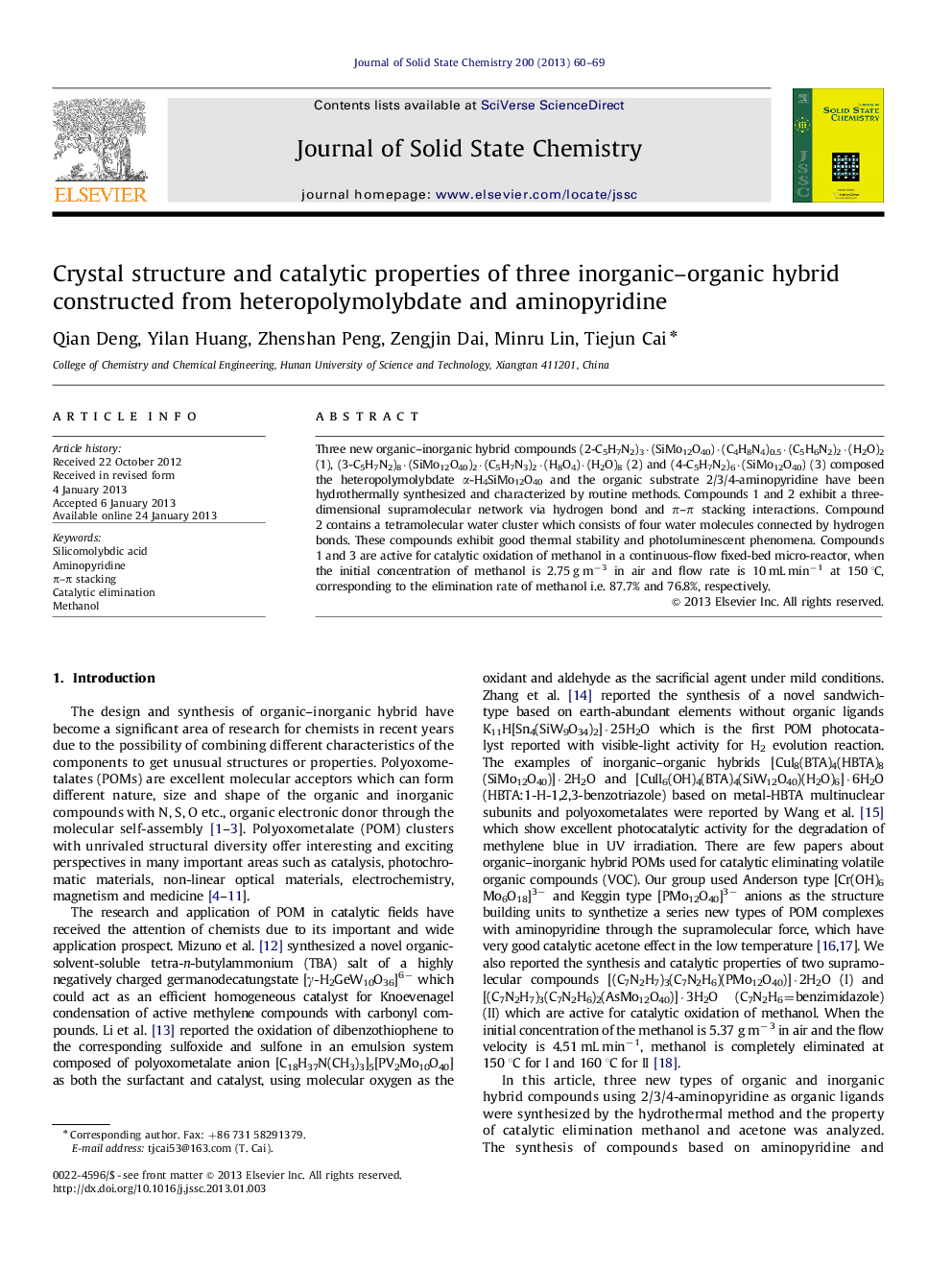| Article ID | Journal | Published Year | Pages | File Type |
|---|---|---|---|---|
| 1331190 | Journal of Solid State Chemistry | 2013 | 10 Pages |
Three new organic–inorganic hybrid compounds (2-C5H7N2)3·(SiMo12O40)·(C4H8N4)0.5·(C5H6N2)2·(H2O)2 (1), (3-C5H7N2)8·(SiMo12O40)2·(C5H7N3)2·(H8O4)·(H2O)8 (2) and (4-C5H7N2)6·(SiMo12O40) (3) composed the heteropolymolybdate α-H4SiMo12O40 and the organic substrate 2/3/4-aminopyridine have been hydrothermally synthesized and characterized by routine methods. Compounds 1 and 2 exhibit a three-dimensional supramolecular network via hydrogen bond and π–π stacking interactions. Compound 2 contains a tetramolecular water cluster which consists of four water molecules connected by hydrogen bonds. These compounds exhibit good thermal stability and photoluminescent phenomena. Compounds 1 and 3 are active for catalytic oxidation of methanol in a continuous-flow fixed-bed micro-reactor, when the initial concentration of methanol is 2.75 g m−3 in air and flow rate is 10 mL min−1 at 150 °C, corresponding to the elimination rate of methanol i.e. 87.7% and 76.8%, respectively.
Three new Keggin type inorganic–organic hybrid frameworks were synthesized. Compounds exhibit an extended three-dimensional supramolecular network. Compounds 1 and 3 have better catalytic activity for eliminating methanol.Figure optionsDownload full-size imageDownload as PowerPoint slideHighlights► Three 3-D Keggin inorganic–organic hybrid frameworks were synthesized. ► The π–π stacking interactions are existed in Compounds 1 and 2. ► Compound 2 contains a tetramolecular water cluster connected by hydrogen bond. ► Compounds 1 and 3 are active in the catalytic oxidation of methanol into CO2 and H2O.
